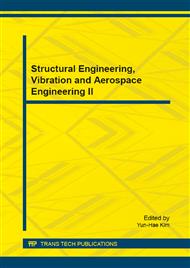p.297
p.303
p.307
p.312
p.318
p.323
p.327
p.334
p.343
Combination of Conflicting Evidence Based on Relative Entropy
Abstract:
Combination of conflicting evidence usually resulted in illogical outcome. In order to solve this problem, an approach to acquire evidence reliability based on relative entropy was proposed by researching the evidence theory and relative entropy. Firstly, the weights of evidences were calculated by evidence distance, reference evidence was obtained by weighting and meaning. Then relative reliabilities were achieved by calculating the relative entropy between original evidence and reference evidence. In the end, final outcome was achieved by D-S composition. This method can commendably extract information in the conflict evidences. The result of the simulation proves it well.
Info:
Periodical:
Pages:
318-322
Citation:
Online since:
January 2015
Authors:
Keywords:
Price:
Сopyright:
© 2015 Trans Tech Publications Ltd. All Rights Reserved
Share:
Citation:


